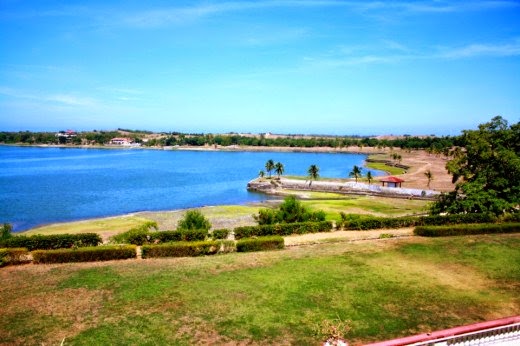Tourist Attractions
 |
| Kapurpurawan Rock Formation |
 |
| Kapurpurawan Rock Formation |
Due to its white color characteristic, its name was derived. In Ilocano word, "Puraw" means white. The rock looked like a large dragon, watching over the entire coast. Once you reach it, you will enjoy watching its natural beauty as this is created by the waves of the ocean for so many years.
Paoay Lake is locally called dakkel danum. What makes Paoay Lake Legendary? It is
because of the interesting and enchanting history narrated by forefathers and
passed upon to the present, including the other stories or observations that
happened in the lake narrated by te residents nearby.
 |
| Paoay Lake |
Ilocos Norte is one of the provinces of the Philippines located in the Ilocos Region in Luzon. Laoag City is the capital of the province. It consists of 1 city and 22 municipalities. Ilocos Norte is located in the northwest corner of Luzon Island. Bordering the province are Cagayan and Apayao in the east; and Abra and Ilocos Sur to the south. Ilocos Norte faces the South China Sea to the west and Luzon Strait to the north.
Ilocos Norte is noted for being the birthplace of former President Ferdinand E. Marcos, who declared Martial Law and led an authoritarian rule over the country during the latter half of his incumbency. The Marcoses enjoy a degree of popularity in the province.
Before the coming of the Spaniards, Ilocos Norte was known to trade with nearby Chinese and Japanese merchants. The region had plenty of gold, so the merchants from Japan and China would often visit the area to trade gold with beads, ceramic and silk. The inhabitants of the region were believed to be of Malay origin and they called their place samtoy, from “sao mi toy”, which literally meant “our language.”
The Ilocano legacy and life can be described as “the browbeaten, industrious, cheerful, simple people who have shown a remarkable strain of bravery and a bit of wanderlust.” The present day Ilocanos searched for greener pastures in new lands, both local and foreign. The Ilocano material culture and spirituality can be seen in the past images of Spanish saints, antique but intricate wooden furniture and quality local fiber. The Ilocano cuisine ranges from the exotic “abu-os” or ant eggs to vegetable broth “dinengdeng”, the sticky “tinubong” to the “poqui-poqui” or eggplant salad.
Majority of the inhabitants of the province are Roman Catholic although several other religious sects have strong followers in the area. The most notable is the Aglipayan Church, founded by Batac native Gregorio Aglipay. Ilocos Norte is home to several famous Roman Catholic churches. Among these are: Paoay Church named as a UNESCO World Heritage Site in 1993; St. William’s Cathedral in Laoag which is famous for its Sinking Bell Tower; St. Monica Church, the biggest church in Ilocos Region; and the Baracca Church.
The major industries in Ilocos Norte are agriculture, fishery, livestock such as swine and cattle, cottage industries such as weaving, furniture making, ceramics and iron works; tourism and pottery. Food processing also contributes to the economy of the province. Salt, empanada, bagoong, basi which is a native Ilocano wine, vinegar, longganisa, chicharon and bagnet are some of the foods that are processed in the province. Ilocos Norte’s position in the northwest corner of Luzon makes it ideal for wind power generation. Currently, there is a 25 Megawatt wind farm in Ilocos Norte, and several wind energy projects are being planned.


























.jpg)
%2Bit%2Bis%2Bone%2Bof%2Bthe%2Bhighest%2Bin%2Bthe%2Bcountry..jpg)





